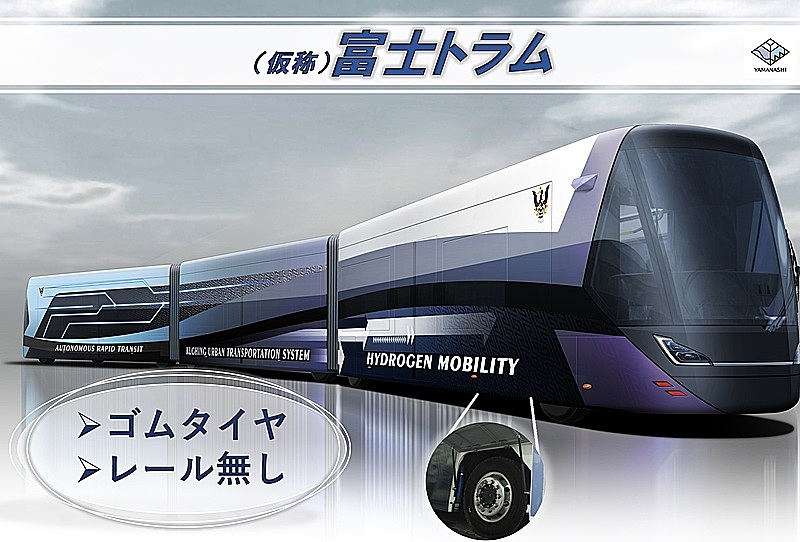
Yamanashi Prefecture revealed survey results of ‘Fuji Tram’ a new transport system for Mt.Fuji, following the announcement in November last year that the prefecture gave up the rail-based LRT system and instead adopted lubber tire-baed tram.
Kotaro Nagasaki, Yamanashi Governor, said at a news conference, “We have confirmed that the lubber tire-based tram is superior to LRT or other transport systems in terms of transport capability, cost-saving and visitor control.”
Fuji Tram is planned to run from the base to the fifth station on the Fuji Subaru Line road and to extend the network to a station of the Linear Chuo Shinkansen in Yamanashi Prefecture, which will hopefully open after 2034.
The prefecture has judged that the magnetic marker guidance system is superior as a result of comparison among five candidate systems. In terms of controlling visitors, which is the biggest purpose for the new transport system, it is better under the current Tramways Act as an operator manages operation frequencies a day.
Fuji Tram supposes 120 seats on two-connected cars to transport 1,200 passengers with 10 trams an hour in the peak times. It is supposed to take 52.5 minutes for outward trip and 48.5 minutes for return trip. Four stations may be placed on the way between the base and the fifth station.
Automatic operation with a conductor on board in the future
The prefecture aims to operate Fuji Tram automatically in the future in accordance with the law regulation, although it recognizes that Level 3 automatic operation with a conductor on board is better in case of emergency or disaster because the tram runs in the mountainous area.
Power source for the tram is supposed to be co-use of storage battery and hydrogen-based fuel battery, not relying on outsourced power sources.
The prefecture explained that initial cost for the magnetic marker guidance system can largely be reduced compared to LRT, calculating 61.8 billion yen for the magnetic marker guidance system versus 134 billion yen for LRT.
In reverse, annual maintenance cost is higher for the magnetic marker guidance system than for LRT at this moment, calculating 4.9 billion yen for the magnetic marker guidance system versus 3.3 billion yen for LRT, because it is operated with hydrogen-based fuel battery. However, the prefecture sees that the cost can be reduced to 3.8 billion yen in 2030, supposing hydrogen unit cost will reduce as planned by the government.
The prefecture did not mention detailed opening schedule, saying as soon as possible before connection to the Linear Chuo Shinkansen station.
 Travel Voice | Japanese Travel Trade News Japan's No.1
Travel Voice | Japanese Travel Trade News Japan's No.1